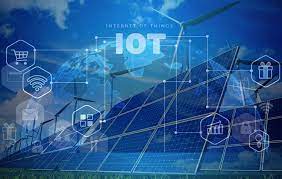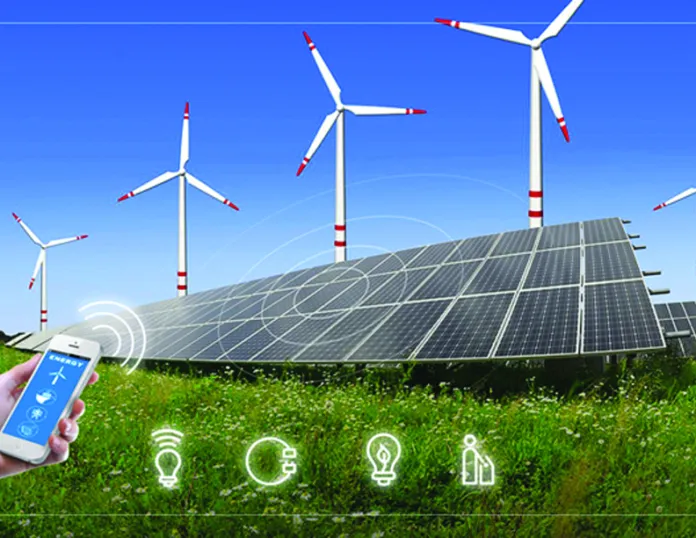How IoT is used in Energy Management:(2024 Guide)
IoT and Energy Management: Pioneering a Sustainable Future

How IoT is used in Energy Management:(2024 Guide)What is Energy Management? According to Wikipedia Energy management includes planning and operation of energy production and energy consumption units as well as energy distribution and storage. Objectives are resource conservation, climate protection, and cost savings, while the users have permanent access to the energy they need. It is connected closely to environmental management, production management, logistics, and other established business functions.

IoT and Energy Management: Pioneering a Sustainable Future
Energy management is a critical concern in today’s world, with a growing focus on sustainability and efficiency. The Internet of Things (IoT) has emerged as a powerful ally in this endeavor, reshaping how energy is produced, distributed, and consumed. In this article, we’ll explore the various applications of IoT in energy management and the profound impact it has on sustainability and cost savings. EnoughInfo.net
Smart Grids: The Backbone of IoT in Energy Management
At the heart of IoT’s influence on energy management are smart grids. These intelligent, interconnected networks are the linchpin of energy distribution and play a pivotal role in ensuring a reliable and sustainable energy supply.
1. Real-time Monitoring
IoT sensors and smart meters enable real-time monitoring of energy consumption, grid performance, and equipment health. This data provides valuable insights to utilities and consumers, enabling more informed decisions about energy usage and distribution. how IoT is used in transport and logistics:(2024)
2. Demand Response
IoT facilitates demand response programs, where consumers can adjust their energy consumption based on real-time pricing or supply conditions. This not only reduces peak loads on the grid but also allows consumers to lower their energy bills by consuming energy during off-peak hours.
Efficient Energy Consumption
IoT plays a critical role in optimizing energy consumption at various levels, from residential to industrial.
1. Smart Homes
IoT devices such as smart thermostats, lighting systems, and appliances enable homeowners to remotely control and automate energy usage. By adjusting settings based on occupancy, weather, or time of day, smart homes can significantly reduce energy waste. How To Protect IoT Devices From Hackers(All You Need To Know)
2. Industrial IoT (IIoT)
In industrial settings, IoT devices are used for predictive maintenance, process optimization, and energy efficiency. Sensors monitor the performance of machinery and equipment, predicting maintenance needs and ensuring that machines operate at peak efficiency to save energy and reduce downtime.
Renewable Energy Integration
As the world shifts towards renewable energy sources like solar and wind, IoT plays a pivotal role in their integration and management. How to Implement AI In Natural Language Processing (NLP)
1. Energy Storage
IoT devices monitor the state of energy storage solutions like batteries. This ensures that excess energy generated during peak production is stored efficiently and used during periods of high demand.
2. Weather Forecasting
Weather conditions heavily influence the production of renewable energy. IoT sensors provide real-time data that can be integrated into energy management systems to predict and optimize energy production from renewable sources. How To Build AI-Driven Marketing Automation Systems
Grid Resilience and Security
The reliability and security of energy grids are paramount. IoT enhances these aspects by:
1. Predictive Maintenance
IoT sensors can detect equipment faults before they cause failures, allowing for proactive maintenance to prevent power outages and enhance grid resilience.
2. Cybersecurity
IoT devices in the energy sector can be vulnerable to cyberattacks. To counter this, robust cybersecurity measures are employed to protect critical infrastructure and data.
Environmental Sustainability
By optimizing energy consumption and integrating renewable sources, IoT contributes significantly to reducing greenhouse gas emissions and the environmental impact of energy production.
Challenges and Considerations
While IoT is a game-changer in energy management, there are challenges to address:
- Interoperability: Ensuring that IoT devices from different manufacturers can communicate and work together seamlessly is a complex challenge.
- Data Privacy and Security: The vast amount of data collected by IoT devices must be secured and managed to protect against data breaches and ensure privacy.
- Regulatory Compliance: The energy sector is heavily regulated, and ensuring IoT systems comply with relevant laws and standards is crucial.
- Initial Investment: Implementing IoT in energy management requires a significant upfront investment, which may deter some organizations.
In conclusion,
IoT’s impact on energy management is profound. It empowers consumers, enhances grid performance, integrates renewable energy sources, and contributes to a more sustainable and efficient energy landscape. As IoT technology continues to advance, we can expect even greater strides in energy management, resulting in a cleaner, more resilient, and cost-effective energy future.








